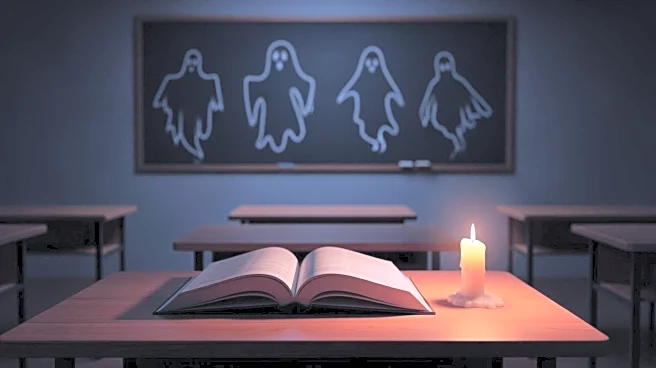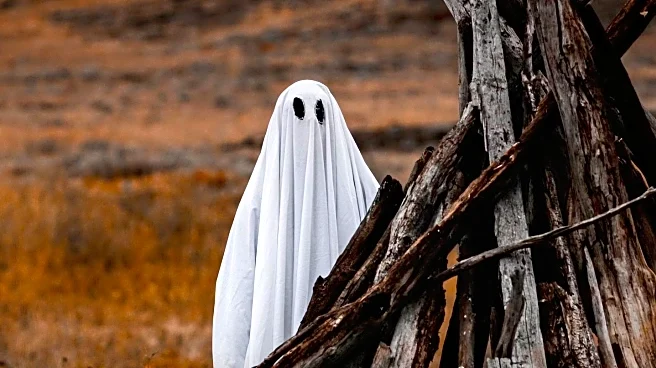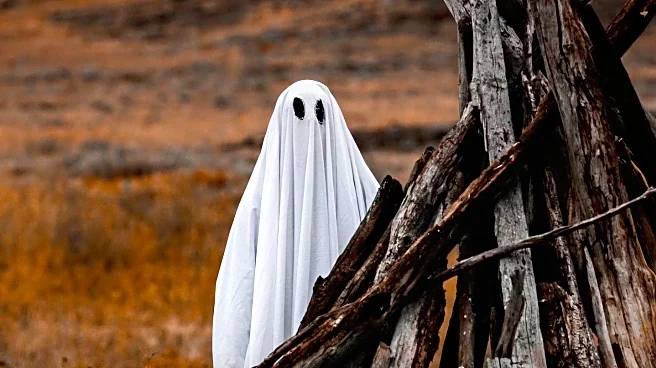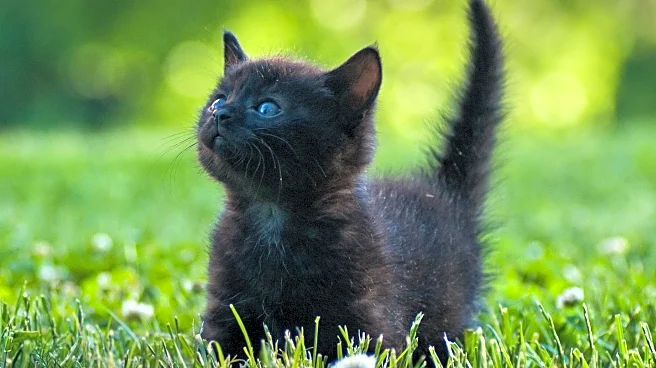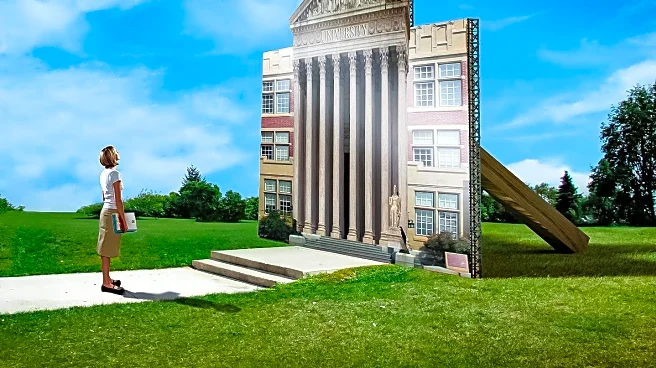What's Happening?
A high school librarian and social studies teacher in Fairview, Pennsylvania, has developed a curriculum that incorporates local ghost stories and urban legends into educational activities for students.
The program, designed for an extracurricular course on local history, aims to explore the haunted history of the area. The curriculum includes analyzing the sociological and psychological roots of urban legends and ghost lore, examining primary sources like century-old newspaper clippings, and taking field trips to sites associated with these stories. The initiative seeks to engage students with their local community and history through the lens of folklore.
Why It's Important?
This educational approach highlights the cultural significance of urban legends and ghost stories as tools for teaching local history and community engagement. By framing these tales as cultural artifacts, educators can foster a deeper connection between students and their hometowns. This method also provides an opportunity to teach information literacy and historical research skills, as students learn to trace the origins of local legends and understand their evolution over time. The program encourages students to think critically about the narratives that shape their communities and to appreciate the historical context behind them.
What's Next?
The curriculum may inspire other educators to adopt similar approaches, integrating local folklore into their teaching methods. This could lead to a broader recognition of the educational value of urban legends and ghost stories, potentially influencing how local history is taught in schools. As students become more engaged with their communities, they may be more likely to participate in local politics or volunteer activities, fostering a sense of civic responsibility. The program also opens up opportunities for collaboration with local historians, librarians, and community leaders, enriching the educational experience.
Beyond the Headlines
The use of urban legends in education raises questions about the role of folklore in shaping community identity and values. These stories often reflect societal attitudes and prejudices, offering a lens through which to examine historical and cultural dynamics. By analyzing how legends evolve, students can gain insights into the changing perceptions and fears of their communities. This approach also challenges the traditional boundaries of education, encouraging experiential learning and community involvement. It highlights the potential for folklore to serve as a bridge between past and present, connecting students with their cultural heritage.
